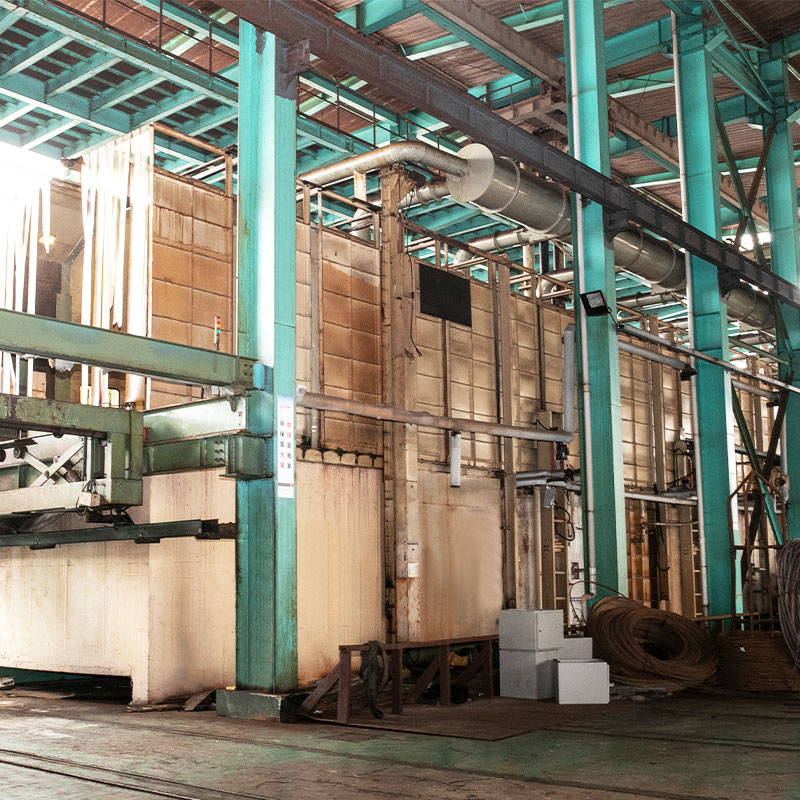Industry News
How do temperature extremes affect the performance of steel fasteners?
Brittle Fracture Risk: At temperatures below the ductile-to-brittle transition temperature (DBTT), steel fasteners become highly susceptible to brittle fracture...

Mild steel is carbon steel with a carbon content o...

Medium carbon steel is carbon steel with a carbon ...

Alloy steel In addition to iron and carbon, other ...

Bearing steel, also known as high carbon chromium ...

Fasteners must be manufactured from raw materials,...

Special-shaped steel refers to steel whose shape i...

Corrosion Risk: Despite the enhanced corrosion resistance imparted by the phosphate coating, the steel can still be susceptible to corrosion under certain conditions. Exposure to harsh chemicals, high temperatures, or prolonged exposure to moisture can compromise the integrity of the coating, leading to localized or generalized corrosion. It's crucial to assess the service environment and select appropriate steel grades and coating thicknesses to mitigate this risk.
Coating Failure: The adhesion strength between the phosphate coating and any subsequent coating (e.g., paint, powder coating) is critical for long-term performance. Poor adhesion can result in coating delamination, blistering, or flaking, which undermines the protective properties of the steel. Ensuring proper surface preparation, selecting compatible coatings, and applying them according to manufacturer specifications are essential to prevent coating failure.
Hydrogen Embrittlement: Although modern pickling processes have significantly reduced the risk of hydrogen embrittlement, it's still a concern in some applications. Hydrogen atoms introduced during the pickling stage can diffuse into the steel lattice, causing microstructural changes that reduce ductility and increase the risk of fracture. Proper control of pickling conditions, including temperature, acid concentration, and rinsing procedures, can minimize this risk.
Environmental Impact: The use of acids and other chemicals in the pickling and phosphating processes can pose environmental risks if not properly managed. Wastewater and emissions generated during these processes must be treated to meet regulatory requirements before disposal. Companies must invest in advanced wastewater treatment systems and comply with strict environmental regulations to minimize their ecological footprint.
Application-Specific Limitations: Pickled and phosphated steel is most suited for applications requiring improved corrosion resistance and enhanced coating adhesion. For applications that do not require these properties, the additional cost and processing steps may not be justified. A careful cost-benefit analysis is necessary to determine if pickling and phosphating are appropriate for a given application.
Material Compatibility: The pickled and phosphated surface of the steel may not be compatible with all subsequent processing steps, such as welding, cutting, or forming. Special precautions may be necessary to avoid damaging the phosphate coating during these operations.


We are a source manufacturer of professional steel wire, we also have our own international trade department, we produce and sell by ourselves.
Ningbo SunRise Refined Metal Wire Material Co., Ltd. is China Custom What are the potential risks or limitations of using pickled and phosphated steel in specific applications? Suppliers and What are the potential risks or limitations of using pickled and phosphated steel in specific applications? Factory. We not only brought in 10 sets of spheroidizing annealing furnaces, dozens of metal wiredrawing equipments and twoworld's leading automatic phosphating pickling lines, but also engaged senior engineers as consultants fromTaiwan. The raw material that we use are supplied by the well known suppliers such as Bao Steel Co., Ltd and Xingtai lron & Steel Corp., Ltd. Also, the domestic lron & Steel manufacturers can be nominated by our customers.
We mainly produce steel wire made of alloy steel, bearing steel, free-cutting steel, high-quality carbon structural steel, low-alloy high-strength structural steel and other materials as raw materials. The annual output is 360,000 tons. It is one of the largest finished wire production bases in Ningbo. We serve all kinds of fasteners, special-shaped parts, automotive fasteners, wind power, petroleum and other fields. Ningbo SunRise is able to meet the high quality requirements of our customers throughout the whole operation process from raw materials to finished products.
Brittle Fracture Risk: At temperatures below the ductile-to-brittle transition temperature (DBTT), steel fasteners become highly susceptible to brittle fracture...
Corrosion Risk: Despite the enhanced corrosion resistance imparted by the phosphate coating, the steel can still be susceptible to corrosion under certain condi...
Directionality of Brushed Lines: Brushed process steel is characterized by fine, linear abrasions that create a distinctive surface texture. Under directional l...
High Hardness: Bearing steels are engineered to achieve specific hardness levels necessary for withstanding heavy loads and maintaining dimensional stability. T...
Contact Us
Your email address will not be published. Required fiels are marked